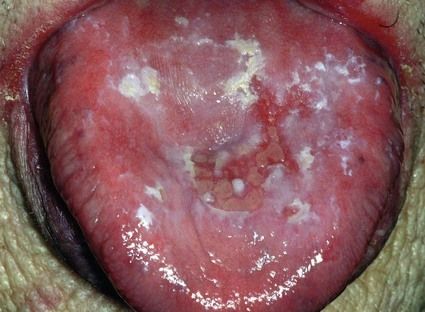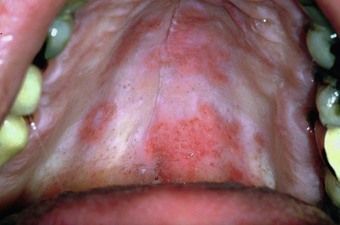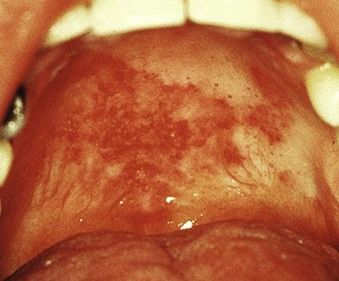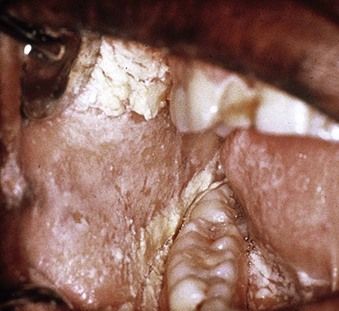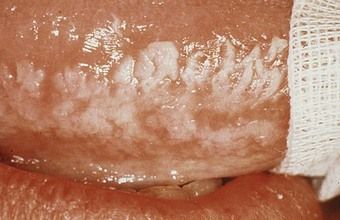Immune defects and haematological defects and malignancies
Human immunodeficiency virus (HIV) disease
HIV is a retrovirus transmitted sexually, via blood, or to the neonate, which has produced a global pandemic, especially affecting people in the developing world. There can be a range of orofacial complications seen in HIV disease (Figure 5.1), and in the acquired immune deficiency syndrome (AIDS) – defined as a CD4 T lymphocyte count of less than 200 cells per microlitre (µl) of blood (Table 5.1).
Table 5.1
Orofacial complications in HIV/AIDS
| Viral infection | Herpesviruses (Figure 5.1), and HPV mainly EBV is a herpesvirus that can cause hairy leukoplakia (Figures 5.6, 5.7) which mainly affects margins of the tongue and is a predictor of progression to full-blown AIDS. EBV may cause lymphoma |
| Fungal infections | Candidosis (Figures 5.2–5.5) |
| Bacterial infection | Necrotizing ulcerative gingivitis/periodontitis (Figures 5.8, 5.9) |
| Virally-related neoplasms | Kaposi sarcoma, lymphoma |
Orofacial lesions in HIV disease have been classified as follows:
Stay updated, free dental videos. Join our Telegram channel

VIDEdental - Online dental courses


